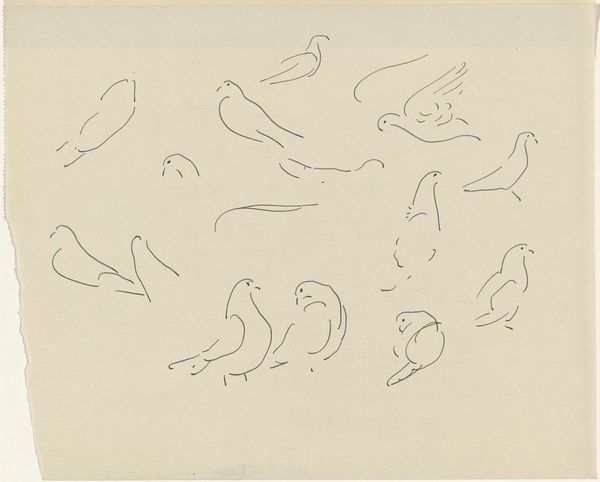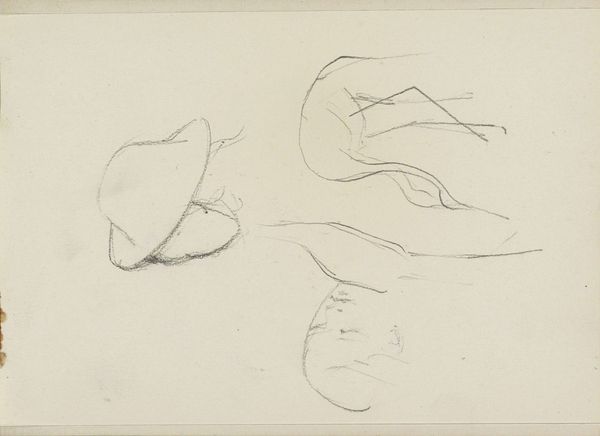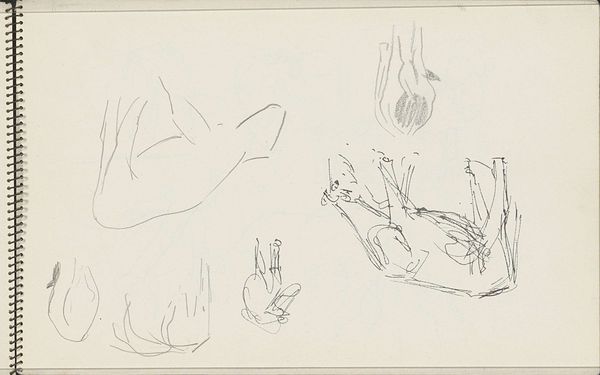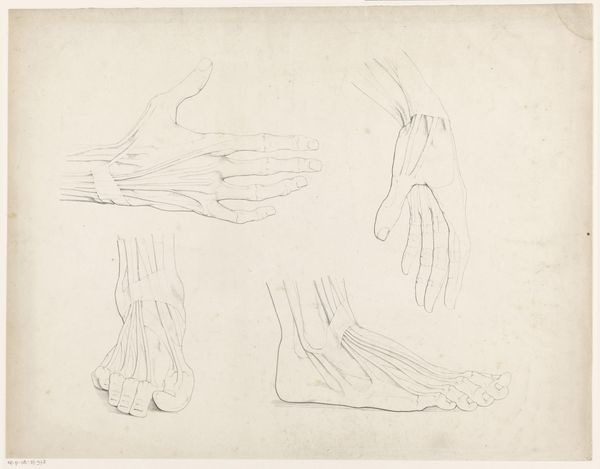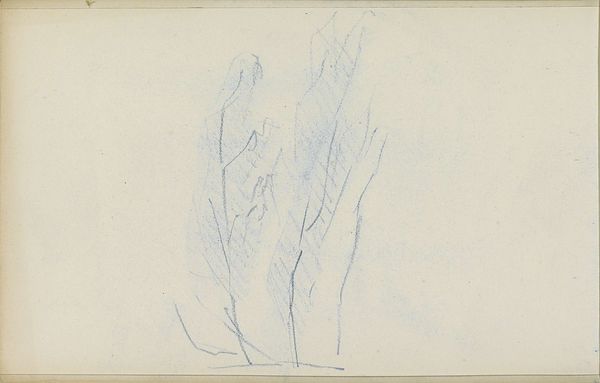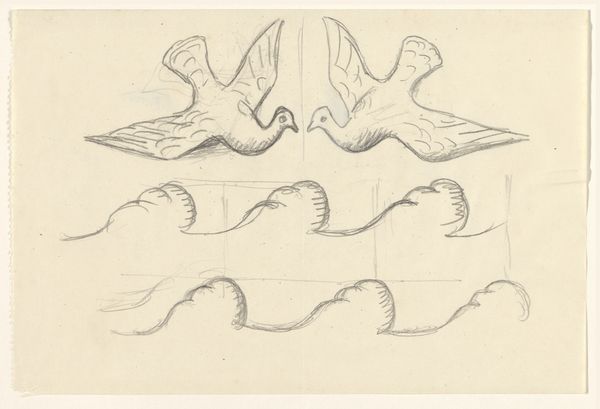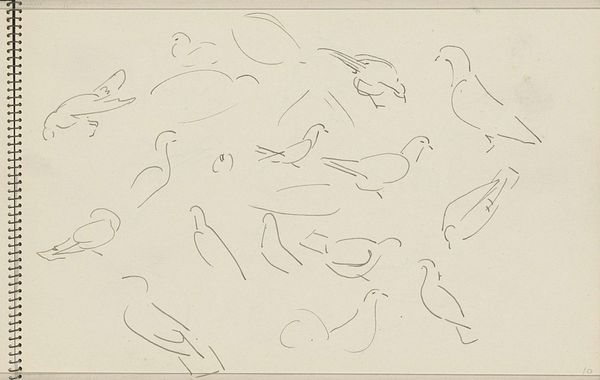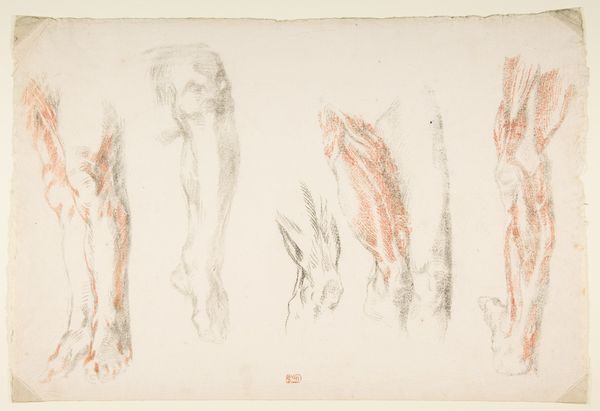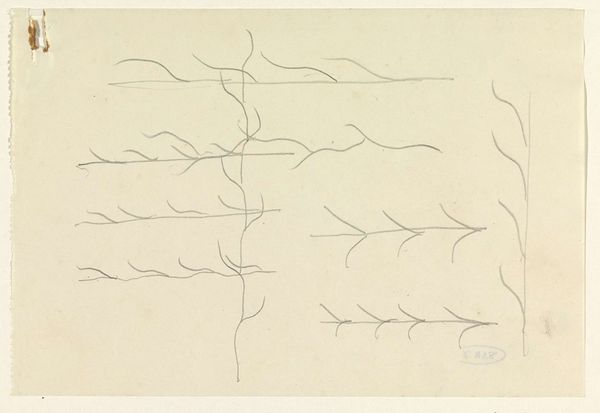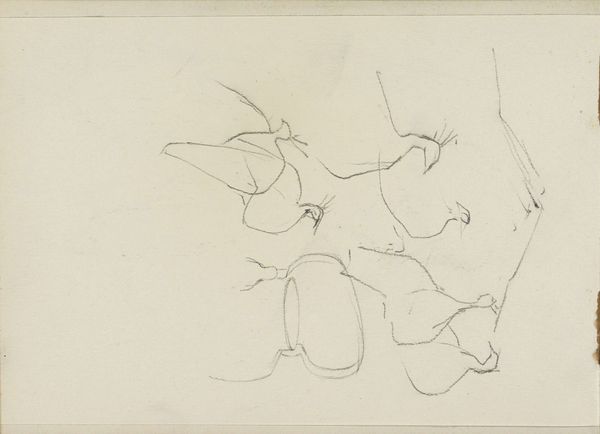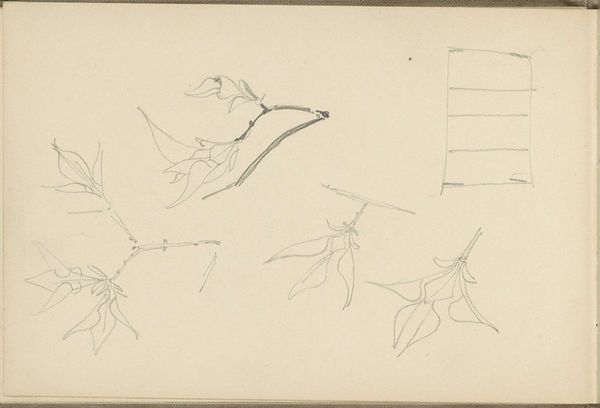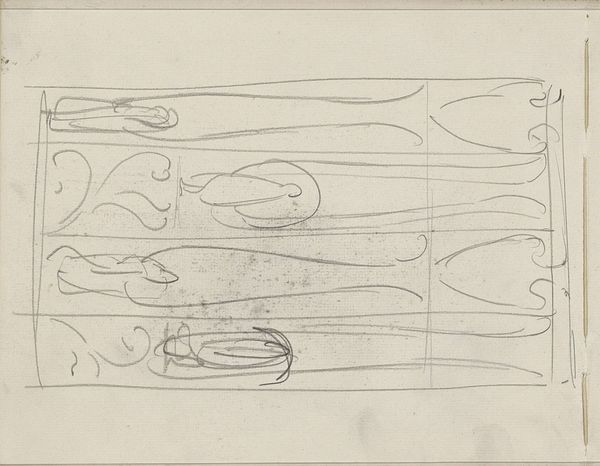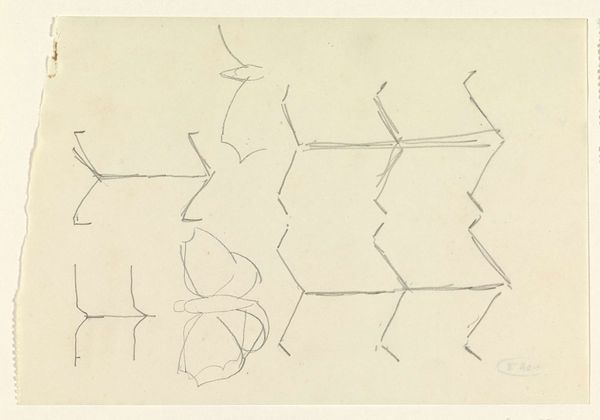
drawing, paper, pencil
#
drawing
#
organic
#
etching
#
paper
#
personal sketchbook
#
plant
#
pencil
#
sketchbook drawing
Dimensions: height 135 mm, width 202 mm
Copyright: Rijks Museum: Open Domain
Editor: Here we have "Takken met bladeren," or "Branches with Leaves," a pencil and crayon drawing on paper by Leo Gestel, created sometime between 1939 and 1941. I find it interesting how he arranges these various studies of foliage; they almost seem like musical notations scattered on a page. What can you tell me about it? Curator: Well, the historical context is crucial here. Gestel made this drawing during the Second World War. Given the societal upheaval and Nazi occupation of the Netherlands, the turn to organic forms suggests a deliberate retreat from the chaos of human affairs. Don't you think focusing on nature in such times could act as a form of resistance, perhaps even silent protest, or personal refuge? Editor: That’s a perspective I hadn’t considered! So, you're saying that by focusing on the apolitical subject of nature, he might actually be making a statement about the importance of preserving beauty and peace in a time of destruction? Curator: Precisely. Consider how institutions also played a part. Art production didn’t stop during the war; museums and galleries found ways to continue exhibiting works. Looking at Gestel’s piece, ask yourself if the art world during wartime chose escapism, commentary, or both? The presence of this drawing in the Rijksmuseum highlights the artwork’s symbolic relevance through the cultural and institutional recognition given by one of Netherlands' most important national museum. Editor: It is definitely a different way to think about sketchbook drawing, beyond their artfulness, technique, or simple appearance! I see your point about both resistance and escape; I imagine many artists chose that path in response to political events during that time. Curator: And how museums preserve these choices reveals as much about the culture that saves them as the artists who made them.
Comments
No comments
Be the first to comment and join the conversation on the ultimate creative platform.
